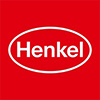

QuantumScape
Solid-State Lithium-Metal Batteries for High-Performance, Safer EVs
QuantumScape is developing next-generation solid-state lithium-metal batteries designed to deliver higher energy density, faster charging, and improved safety by replacing the flammable polymer separator with a thin, non-combustible ceramic separator. For OEMs and Tier-1s, this architecture reframes battery thermal management: higher power demands and rapid charging increase heat flux, while the solid-state design aims to mitigate thermal-runaway risk and simplify safety engineering at the pack level.
With a cell format and manufacturing toolkit built specifically for lithium-metal, QuantumScape integrates heat paths and pressure management at the cell—not only the pack—while scaling separator production to automotive volumes. Recent safety testing on 24-layer prototype cells shows Hazard Level 3 (minor venting) even when heated to 300°C, underscoring the technology’s thermal stability under abuse compared with conventional Li-ion.
Key Technologies Supporting EV Battery Systems:
FlexFrame™ Cell Format
Engineered hybrid pouch/prismatic cell with a rigid perimeter frame and flexible faces to route heat laterally for efficient side/back cooling—supporting fast-charge heat rejection and operation with or without external pressure for pack integration.
Ceramic Solid-Electrolyte Separator
Non-combustible separator chemically isolates anode and cathode; in heated-cell abuse tests to 300°C, QS’s 24-layer prototypes achieved EUCAR Hazard Level 3, indicating improved thermal stability versus conventional Li-ion.
Cobra™ Separator Process
Next-generation ceramic-separator manufacturing that delivers ~25× faster heat-treatment versus the prior “Raptor” process, shrinking equipment footprint—critical to scaling solid-state cells cost-effectively.
Low-Temperature Performance
Reported capacity retention down to −30°C reduces reliance on heavy pre-heating strategies and helps maintain drivability in winter conditions—key for BMS thermal logic and customer range expectations.
Whether in thermal architecture, battery management, or systems integration, QuantumScape’s innovations—FlexFrame, a non-combustible ceramic separator, and the high-throughput Cobra process—target the core challenges of lithium-metal batteries: heat dissipation during fast charge, uniform temperature control, safety under abuse, and manufacturability at scale.
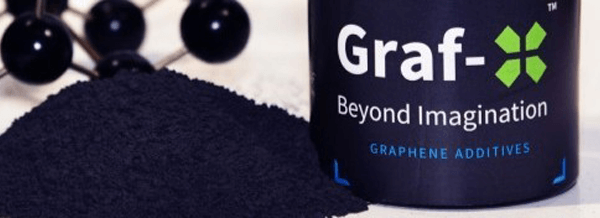

NeoGraf Solutions
Graphite Thermal Solutions for Lightweight, Safer EV Batteries
NeoGraf Solutions supplies advanced flexible graphite materials that move heat fast, even in thin, lightweight formats—helping OEMs and Tier 1s tame hotspots, improve uniformity, and slow thermal propagation in EV packs. Flagship eGraf® SpreaderShield™ heat spreaders replace thicker aluminum fins to cut mass and channel heat efficiently to cold plates during charge/discharge.
With more than a century of graphite innovation, NeoGraf’s portfolio spans heat spreaders, TIMs, thick graphite laminates, fire-protection additives, and high-temperature seals—building blocks that drop into today’s battery modules and pack architectures.
Key Technologies Supporting EV Battery Systems:
SpreaderShield™ Flexible Graphite Heat Spreaders
Thin, die-cuttable heat spreaders that replace aluminum cooling fins to reduce pack weight by ~20–40 kg per vehicle, lower hotspot temperatures, and help limit cell-to-cell propagation by routing heat to the cold plate.
HiTherm™ Graphite TIMs
Compliant, sheet-based thermal interface materials that drive out interfacial air gaps and cut contact resistance; through-plane conductivity up to ~10–16 W/m·K with very high in-plane conduction for lateral spreading—ideal under baseplates and busbars.
NeoNxGen™ Thick Flexible Graphite
Single-layer, high-performance graphite (UL 94 V-0) for “thick” heat paths, shields, and fin geometries where multiple layers were once required—simplifying assembly while sustaining ~900–1100 W/m·K in-plane conduction.
GrafGuard® Expandable Graphite (Fire Protection)
Non-halogenated, intumescent graphite additive for foams, coatings, and barrier walls that forms a char layer, absorbs heat, and displaces oxygen—supporting pack-level fire-protection strategies without melamine-based FRs.
GraFoil® Flexible Graphite Seals & Gaskets
High-temperature, chemically resistant sealing materials for coolant plates, manifolds, and battery housings—maintaining integrity where elastomers can degrade.
Whether in battery systems, power electronics, or structural modules, NeoGraf’s graphite innovations—SpreaderShield heat spreaders, HiTherm TIMs, NeoNxGen laminates, GrafGuard fire protection, and GraFoil seals—are enabling lighter packs, tighter thermal control, and safer EVs.
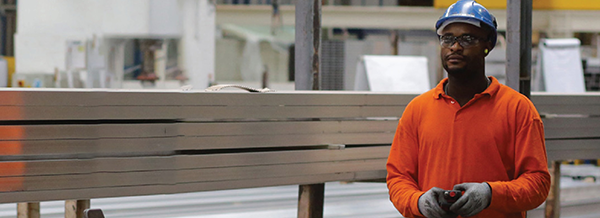

Constellium
Lightweight Aluminium Enclosures & Crash Systems for Better-Cooled, Safer EV Batteries
Constellium is a trusted supplier of advanced aluminium materials and structures engineered to meet the evolving needs of electric vehicle (EV) manufacturing. Its innovation-driven portfolio helps OEMs and Tier 1 suppliers solve key challenges in EV battery integration, lightweight construction, thermal performance, and structural safety.
With decades of expertise in aluminium sheet, extrusions, and integrated component manufacturing, Constellium delivers enclosures, cooling structures, and crash systems that combine high thermal conductivity with high strength—critical for today’s battery trays, module carriers, pack covers, and underbody protection.
Key Technologies Supporting EV Battery Systems:
Modular Aluminium Battery Enclosures
Crashworthy, high-conductivity trays and covers—cell-to-pack ready with efficient heat spreading and packaging flexibility.
HSA6™ High-Strength 6xxx Extrusions
Thin-wall frames, cross-members, and stiffeners that cut mass while maintaining stiffness and intrusion resistance.
Extruded Cooling Plates & Manifolds
Integrated-channel cold plates and headers for fast-charge heat rejection and tight ΔT control across modules.
Aheadd® CP1 Additive-Manufacturing Alloy
High-conductivity AM alloy for complex heat exchangers, thermal bus structures, and lightweight brackets.
Crash Management Systems (CMS)
Extruded bumper beams and crash boxes that protect occupants and battery enclosures in severe impacts.
Whether in battery systems, power electronics, or structural assemblies, Constellium’s aluminium innovations are shaping the future of EV mobility—delivering lighter packs, better thermal control, and robust safety performance.


Evonik
Specialty Materials & Additives Powering Safer, Better-Cooled EV Batteries
Evonik is a global leader in specialty chemicals supplying critical materials that improve the safety, thermal management, and manufacturability of lithium-ion batteries. From ceramic-coated separators and cathode surface treatments to advanced adhesives, coatings, and polymers, Evonik’s portfolio helps OEMs and Tier-1s boost energy density, manage heat, and extend service life.
With deep expertise across fumed oxides, epoxy curing agents, and high-performance polyamides, Evonik supports battery makers from electrode processing to pack integration—lightweighting housings, reinforcing thermal interfaces, and optimizing coolant circuits for fast-charge heat loads.
Key Technologies Supporting EV Battery Systems:
AEROXIDE® Fumed Alumina (Ceramic-Coated Separators)
Enables ultra-thin, uniform ceramic coatings (down to ~1 µm) that cut thermal shrinkage and enhance separator stability and safety.
AEROXIDE® / AERODISP® for Cathode Surface Coatings & Slurries
Dry or dispersed alumina/titania treatments stabilize CAM particles, improve capacity retention, and extend battery lifetime.
TEGO® Therm Fire-Resistant Coatings
Thermal-insulation granules with a heat-stable hybrid binder for fire-resistant coatings on battery housings and covers—supporting pack-level safety concepts.
VESTALITE® S Epoxy Curing Agent (with Vestaro)
Enables lightweight, cost-effective GF-SMC battery housings that meet performance targets traditionally served by metal enclosures.
VESTAMID® PA12 Coolant Lines
Robust mono- and multilayer tubing for water-glycol or refrigerant circuits—engineered to keep EV battery temperatures in the optimal window during charging, driving, and parking.
AEROSIL® Fumed Silica for TIMs & Structural Adhesives
Improves rheology and reinforcement in gap fillers, potting materials, and structural adhesives used across modules and pack assemblies.
Whether in battery systems, power electronics, or structural enclosures, Evonik’s materials are helping the industry deliver lighter packs, tighter thermal control, and improved safety for the next generation of electric vehicles.


Intertek
Battery Safety, Thermal Validation & Certification for Next-Gen EVs
Intertek is a global Assurance, Testing, Inspection, and Certification (ATIC) partner helping OEMs and Tier-1s de-risk EV battery programs from cell to pack to charging. Its Electrification Centre of Excellence near Detroit brings one of North America’s most extensive EV battery and EVSE test footprints—spanning abuse, fire/propagation, vibration, environmental, and high-power cycling—so teams can validate safety, performance, and durability under real-world thermal loads.
With global labs and certification pathways, Intertek navigates UN 38.3 transport, UL/IEC/ISO/SAE battery safety, and OEM methods while supporting BMS-in-the-loop evaluations, failure analysis, and market access (ETL). The Plymouth, MI facility features 200,000 ft² with 1,200 V/600 kW battery cyclers, a 55,000 lbf shaker, ~90 environmental chambers, EVSE emulation, and dedicated fire/bunker areas—built for fast-charge heat fluxes and module/pack-level thermal propagation studies.
Key Technologies Supporting EV Battery Systems:
EV Battery Safety & Abuse Testing
Cell/module/pack-level overcharge, external short, crush, nail penetration, thermal shock, humidity/temperature cycling, mechanical shock, and fire exposure—aligned to UL 2580, IEC 62660, ISO 12405, SAE J2464/J2929, ECE R100, USABC/USCAR, and OEM specs.
Thermal Propagation & Fire Testing
Pack fire tests and propagation scenarios, plus extreme events such as 30-meter drop testing—supporting safety cases and countermeasure validation.
Environmental & Vibration for Thermal Robustness
Altitude, thermal/humidity cycles, and high-energy shaker/vibration campaigns to uncover cooling-system and interconnect weaknesses that drive hotspots or ΔT spread. (55,000 lbf shaker; large chamber inventory.)
BMS Simulation, Monitoring & Failure Analysis
BMS-in-the-loop cycling, HPPC, drive-profile simulations, teardown and forensic analysis to link thermal behavior with control strategies and lifetime models.
Certification & Global Market Access
UN 38.3 transport testing, IEC 62133, and ETL certification support to accelerate compliance and shipment readiness across regions.
EV Fluids & Cooling Media Testing
Rig and vehicle-level programs for e-axle and battery-adjacent fluids to quantify heat removal, losses, and system interactions—informing coolant selection and thermal architecture.
Whether you’re mapping fast-charge heat loads, proving out thermal-runaway countermeasures, or closing certification gaps, Intertek’s electrification labs and standards expertise help bring safer, better-cooled EV batteries to market—faster.


Ampcera
Solid-State Electrolytes & Scalable Manufacturing for Safer, Fast-Charging EV Batteries
Ampcera develops high-performance solid-state electrolyte (SSE) materials—centered on engineered argyrodite sulfides—designed to enable fast charging, higher energy density, and improved safety versus conventional liquid electrolytes. The company partners across the EV value chain to integrate SSEs into next-gen cells and packs.
Backed by U.S. government programs and an expanding manufacturing base, Ampcera is scaling from pilot to high-volume production to support OEM and Tier-1 adoption—linking materials innovation with roll-to-roll processes, dry-electrode manufacturing, and thin-film membranes.
Key Technologies Supporting EV Battery Systems:
Argyrodite Sulfide Solid Electrolytes
High-purity, high-ionic-conductivity sulfide SSEs tailored for EV cells—aimed at fast charge, high energy density, and enhanced safety/thermal-runaway resistance.
Nano Sulfide Powders (Next-Gen SSE Feedstocks)
Super-fine, high-conductivity powders that enable ultra-thin (~≤10 µm) separator layers and dense composite interfaces—now shipping globally to solid-state battery makers.
Flexible Composite SSE Membranes (Roll-to-Roll)
Proprietary ceramic-polymer composites processed via tape casting and gravure printing to produce strong, flexible SSE films—engineered for mass production and pack-friendly assembly.
Thin-Film & Plasma-Processed LLZO Membranes
Atmospheric plasma spray and rapid spray plasma processing to make dendrite-resistant LLZO films (≤50 µm) with reduced dry-room dependence—supporting scalable solid-state architectures.
Dry Laser Powder-Bed Fusion Cathodes
Additively manufactured, structured cathodes via dry L-PBF to boost energy/power density while enabling recyclable powders and roll-to-roll integration—an avenue toward solvent-free cell production.
Scaling & Supply Chain Readiness
Industrial pilot capacity (~20 t/yr) with a pathway toward ~1,000 t/yr sulfide electrolyte output by 2026, under rigorous quality controls for batch-to-batch consistency.
Ampcera’s SSE portfolio and manufacturing know-how—spanning argyrodite powders, flexible membranes, thin films, and dry-processed electrodes—are helping OEMs and Tier-1s deliver lighter, safer, and faster-charging EVs.
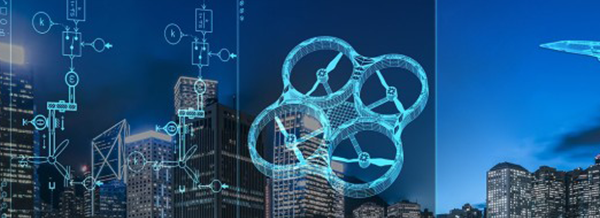

M4 Engineering
Simulation, Optimization & Prototyping for Next-Gen EV Battery Thermal Management
M4 Engineering is an engineering, prototyping, and testing partner that helps OEMs and Tier-1s design lighter, safer EV battery systems. Through high-fidelity simulation, digital twins, structural optimization, and hands-on validation, M4 tackles heat, weight, and manufacturability— from cells and modules to pack structures and power electronics.
A 2025 strategic partnership with HeatSync expands M4’s capability set across battery and electronics thermal management—combining advanced thermal modeling with practical test and prototyping workflows for faster, more reliable integration.
Key Technologies Supporting EV Battery Systems:
Battery & Electronics Thermal Simulation (Digital Twin)
High-fidelity thermal models and digital-twin workflows to size cooling hardware, manage hotspots, and assess thermal propagation—paired with rapid test loops to de-risk designs early.
Multidisciplinary Design Optimization (MDO)
Integrated aero/structural/thermal optimization to balance pack performance, mass, stiffness, and cost under fast-charge heat loads and crash/abuse constraints.
Topology & Weight Optimization
Automated topology/weight-reduction studies for cold plates, manifolds, module carriers, and pack structures—cutting material while preserving thermal/structural targets.
Composite & Advanced Materials Engineering
Design, analysis, and training for composite structures—enabling lightweight battery enclosures and module frames with manufacturable layups and joining strategies.
Prototyping & Test (Long Beach Advanced Prototyping & Test Center)
Hardware-in-the-loop thermal experiments, electronics/power device testing, and build support to validate models, materials, and interfaces before scaling.
Industry Partnerships & Scale-Up Support
Co-development with HeatSync (battery/electronics thermal), plus broader collaborations to accelerate design cycles with CFD/HPC and manufacturing know-how.
From lighter, mass-optimized packs and tighter temperature uniformity across modules to accelerated concept-to-prototype cycles, M4 Engineering delivers simulation-led design, advanced optimization, and hands-on validation for EV battery thermal management and systems integration.


DuPont
Materials, TIMs & Adhesives Enabling Safer, Better-Cooled EV Batteries
DuPont supplies a broad portfolio of battery-ready materials—thermal interface solutions, structural/thermal adhesives, electrically insulating films, and aramid papers—that help OEMs and Tier-1s manage heat, improve pack rigidity, and enhance safety from cell to enclosure. Brands like BETATECH™, Kapton®, Nomex®, and Laird™/Temprion® anchor cell-to-cold-plate heat paths while supporting electrical isolation and durability.
With global mobility programs and electronics expertise, DuPont integrates dispensable TIMs, thermally conductive bonding, EMI/EMC solutions, and high-temperature polymers into practical manufacturing workflows—from automated dispensing to die-cut films and laminates—accelerating battery module and pack build at scale.
Key Technologies Supporting EV Battery Systems:
BETATECH™ Dispensable TIM
Maintains thermal conductivity between cells/modules and cold plates across wide operating ranges; specified in high-volume EV programs (e.g., Renault) and recognized with a 2024 CLEPA Innovation Award.
BETAFORCE™ TC & BETAMATE™ TC Thermal/Structural Adhesives
Thermally conductive, crash-durable bonding for multi-material battery boxes, lids, and cooling plate interfaces—boosting stiffness while aiding heat transfer and throughput.
BETASEAL™ 900EI Electrically-Isolating Adhesive/Sealant
Seals and services packs and panels while providing electrical isolation—useful for enclosure joints and aftermarket repair strategies.
Kapton® MT+ Thermally Conductive Polyimide Films
Electrically insulating film (≈0.8 W/m·K) for cell wraps, slot liners, and heat-spreader stacks—improving heat dissipation without metal mass.
Nomex® Aramid Insulation & Kapton®/Nomex® Laminates
High-temperature electrical insulation for cells, modules, and e-motors; established in traction-motor slot liners and battery insulation systems.
Laird™/Temprion® Thermal Materials
Comprehensive TIM portfolio—gap fillers, pads, tapes, greases, and phase-change films—for module, inverter, and BMS cooling; integrates with DuPont electronics and film solutions.
Across battery modules, pack enclosures, and power electronics, DuPont’s portfolio enables lighter packs, tighter temperature uniformity, and elevated safety for next-generation EVs.


Momentive
Silicone Thermal Materials for the Next Generation of Electric Vehicles
Momentive is a trusted supplier of silicone-based thermal solutions engineered to meet the evolving needs of EV battery manufacturing. Its e-mobility portfolio helps OEMs and Tier 1 suppliers solve core challenges in battery thermal management, systems integration, and safety—spanning thermal gap fillers and adhesives to potting gels, sealing materials, and non-halogenated flame retardants for battery housings.
With deep expertise in formulated silicones, Momentive delivers materials that combine high thermal conductivity (SilCool® TIMs spanning ~2.5–10 W/m·K) with low thermal resistance and reliability under vibration—key for fast-charge heat flux, predictive thermal models, and AI-driven BMS strategies that depend on stable, sensor-friendly interfaces.
Key Technologies Supporting EV Battery Systems:
SilCool® Thermally Conductive Gap Fillers
Dispensable, soft two-part silicones that fill uneven interfaces to improve heat flow from cells/modules to cold plates; portfolio covers ~2.5–10 W/m·K and has demonstrated strong performance in hot-vibration testing.
SilCool® Thermal Adhesives
High-conductivity bonding that replaces mechanical fasteners while maintaining a robust thermal path between heat sources and spreaders/plates—designed for high-volume processing.
SilCool® Potting & Gel Encapsulation
Flowable, thermally conductive silicones that conform to complex geometries, fill voids, and reduce interfacial resistance—supporting uniform temperature and component durability.
NEVSil™ & Silicone Sealing Adhesives/Elastomers
Pack-level sealing and gasketing solutions (RTV/CIPG/FIPG) formulated for harsh environments and UL 94 V-0–capable applications—supporting moisture/ingress control and consistent thermal contact pressure.
SFR100 Silicone Flame Retardant
Non-halogenated silicone additive for battery-housing polymers that helps deliver fire-safety performance without sacrificing toughness or causing corrosion—an option for lowering fire load at the enclosure level.
Momentive’s silicone innovations—SilCool® TIMs and adhesives, potting gels, NEVSil™ sealing solutions, and SFR100—are enabling lighter, cooler, and safer EVs built for intelligent, predictive thermal control.


Natrion Inc.
Safer LFP Packs & Dual-Chemistry Range for the Next Generation of Electric Vehicles
ONE is a trusted supplier of advanced battery systems engineered to meet the evolving needs of EV manufacturing. Its innovation-driven portfolio helps OEMs and Tier 1 suppliers solve key challenges in battery thermal management, systems integration, and safety—combining high-conductivity pack structures, robust BMS features, and propagation-mitigation designs with U.S.-manufactured LFP cells, modules, and battery management systems.
With deep experience in LFP mobility packs (Aries™/Aries™ II) and long-range dual-chemistry systems (Gemini™), ONE delivers architectures that lower thermal-runaway risk, improve temperature uniformity, and support predictive control strategies during fast charge and high-power operation. Recent milestones include WLTP-verified 608 miles in a BMW iX using Gemini and system-level advances to prevent and contain thermal propagation in grid and mobility formats.
Key Technologies Supporting EV Battery Systems:
Aries™ II All-LFP Pack
High-safety, nickel- and cobalt-free chemistry with modular design for side-impact robustness—engineered to reduce thermal-runaway risk while maintaining competitive range/power.
Structural Cell-to-Pack Architecture
LFP cells integrated into structural housings for efficient load transfer and heat spreading—boosting volumetric efficiency and simplifying pack integration.
Gemini™ Dual-Chemistry Range Layer
System delivering long-range capability (BMW iX: 608.1 miles WLTP) with high pack-level energy density—paired with thermal strategies for sustained power without excessive heat buildup.
Thermal Propagation Mitigation
Multiple redundant safety systems designed and proven to prevent and contain propagation events at the module/system level—informing mobility pack designs.
Aries™/Aries Grid BMS & Integration
Advanced SOC/SOH algorithms, high-current balancing (up to 300 mA), and MESA-compliant comms—facilitating predictive thermal control and AI-driven fleet energy management via seamless system integration.
U.S.-Manufactured Cells, Modules & Systems
Domestic LFP cells, modules, BMS, and turnkey systems to meet content requirements and ensure cybersecurity in connected, software-defined vehicles.
ONE’s innovations—Aries LFP, Gemini dual-chemistry, propagation-mitigation designs, and integration-ready BMS—are shaping the future of EV mobility with cooler, safer batteries built for predictive, software-defined control.


Erwin Quarder Systemtechnik
Metal-Plastic Direct-Bond Cooling for Next-Gen EV Batteries
Erwin Quarder Systemtechnik is a family-owned, globally active development and manufacturing partner specializing in hybrid plastic-metal components, automation, and high-performance battery cooling. The company integrates design, in-house toolmaking, automated assembly, and series production across five locations to deliver turnkey thermal solutions for EV packs and modules.
Built around its MetalPlasticDirectBond® (MPDB®) process, Quarder engineers leak-tight, lightweight coolers and housings that eliminate brazing and seals, enable functional integration (ports, busbars, sensors), and are validated to automotive standards—helping OEMs and Tier-1s reduce weight, cost, and corrosion risk while improving temperature uniformity and manufacturability.
Key Technologies Supporting EV Battery Systems:
MPDB® Pocket Profile Cooling (Inter-cell Cooling)
Wave-profile polymer channels bonded directly to metal for round and prismatic cell modules; removes soldering, cuts length/bend tolerances, allows flow optimization and sensor integration; fully validated to automotive standards and aimed at weight/cost reduction.
MPDB® High-Performance Cold Plate
Modular prismatic-cell cold plates with single-port control for precise module balancing, pack-level balancing via interchangeable inserts, and flexible length/width with high flatness—targeting lightweight, high-performance cooling at competitive cost.
MetalPlasticDirectBond® Process (MPDB®)
Micro-/nano-structured metal surface and injection-molded plastic create a helium-tight, long-term stable metal-plastic composite—no brazing, seals, or screws; cycle time for the bonding step ~5 s. Enables deep functional integration (ports, busbars, temperature sensors) and combines metal forming with plastic processing for scalable series production.
Plastic Battery Housing with Integrated Cooling
Direct metal-plastic bond supports lightweight housings with embedded channels; modular, pluggable “box” systems allow integration of tubing, busbars and sensors, with AI-optimized channel layouts to avoid hotspots and lower pressure loss—designed for automated assembly.
MPDB® Performance/Power Box (Reference Architecture)
Helium-tight MPDB® composites can replace milled or die-cast aluminum: parallel-flow bottom coolers reduce pressure drop, flexible top coolers minimize TIM thickness, and high-gloss surfaces (<20 nm Ra) lower thermal resistance—demonstrating performance and cost advantages of the MPDB® approach.
Whether for inter-cell cooling, prismatic cold plates, or integrated battery housings, Erwin Quarder’s MPDB® platform brings leak-tight metal-plastic bonding, functional integration, and automotive-validated manufacturability to EV battery thermal management—backed by in-house tooling, automation, and global production.


AkzoNobel
Powder Coatings that Electrically Insulate, Protect & Cool EV Battery Systems
AkzoNobel’s Resicoat® and Interpon® powder coatings help OEMs and Tier-1s solve core EV battery challenges—electrical insulation, thermal pathways to cold plates, and corrosion resistance—across cells, modules, packs, busbars, and cooling components. The dedicated Resicoat EV portfolio is engineered for high dielectric strength, robust edge coverage, and resistance to thermal shock and chemicals—attributes that support safer packs and tighter thermal control.
Backed by decades in functional powder technology, AkzoNobel has expanded Resicoat with EV-specific grades and a single-spray innovation that reaches target film thickness and dielectric performance in one pass—boosting throughput while maintaining insulation on parts like cooling plates and covers. Key EV grades carry UL approvals (e.g., UL 94 V-0; UL 746B Class B 130 °C) and are designed to work alongside pack thermal architectures.
Key Technologies Supporting EV Battery Systems:
Resicoat® EVcell (Cell-to-Cell Insulation)
High dielectric strength (30–70 kV/mm), UL 94 V-0 flame rating, electrolyte resistance, and 0.2–0.8 W/m·K thermal conductivity to help manage heat and prevent electrical shorts in cylindrical/prismatic cells.
Resicoat® EVpack (Pack & Housing Protection)
Electrical insulation and corrosion/chemical resistance for covers, side plates, and housings; UL 746B Class B (130 °C), UL 94 V-0, surface resistivity >10¹³ Ω, dielectric constant 4.0–5.8.
Resicoat® EVcooling (Cooling Plates/Tubes/Trays)
Formulated for high breakdown voltage, excellent edge coverage, and enhanced heat dissipation—supporting efficient transfer to cold plates and uniform module temperatures.
One-Spray EV Battery Coating
New Resicoat technology achieves required thickness in a single spray, improving productivity while delivering high dielectric protection and resistance to thermal shock, water immersion, and chemicals (initially available in China).
Resicoat® EVbusbar & EVmotor
Powder coatings for busbars (electrical insulation, improved heat dissipation, lower fire load) and hairpin stators (motor insulation) to extend reliability under thermal stress.
From cell insulation and busbar protection to coated cooling plates and pack housings, AkzoNobel’s Resicoat® EV lineup—EVcell, EVpack, EVcooling, the one-spray process, and EVbusbar/EVmotor—helps OEMs deliver EV batteries that run cooler, last longer, and meet higher safety standards.
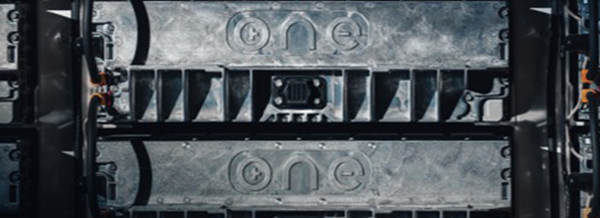

ONE | Our Next Energy
Safer LFP Packs & Dual-Chemistry Range for the Next Generation of Electric Vehicles
ONE is a trusted supplier of advanced battery systems engineered to meet the evolving needs of EV manufacturing. Its innovation-driven portfolio helps OEMs and Tier 1 suppliers solve key challenges in battery thermal management, systems integration, and safety—combining high-conductivity pack structures, robust BMS features, and propagation-mitigation designs with U.S.-manufactured LFP cells, modules, and battery management systems.
With deep experience in LFP mobility packs (Aries™/Aries™ II) and long-range dual-chemistry systems (Gemini™), ONE delivers architectures that lower thermal-runaway risk, improve temperature uniformity, and support predictive control strategies during fast charge and high-power operation. Recent milestones include WLTP-verified 608 miles in a BMW iX using Gemini and system-level advances to prevent and contain thermal propagation in grid and mobility formats.
Key Technologies Supporting EV Battery Systems:
Aries™ II All-LFP Pack
High-safety, nickel- and cobalt-free chemistry with modular design for side-impact robustness—engineered to reduce thermal-runaway risk while maintaining competitive range/power.
Structural Cell-to-Pack Architecture
LFP cells integrated into structural housings for efficient load transfer and heat spreading—boosting volumetric efficiency and simplifying pack integration.
Gemini™ Dual-Chemistry Range Layer
System delivering long-range capability (BMW iX: 608.1 miles WLTP) with high pack-level energy density—paired with thermal strategies for sustained power without excessive heat buildup.
Thermal Propagation Mitigation
Multiple redundant safety systems designed and proven to prevent and contain propagation events at the module/system level—informing mobility pack designs.
Aries™/Aries Grid BMS & Integration
Advanced SOC/SOH algorithms, high-current balancing (up to 300 mA), and MESA-compliant comms—facilitating predictive thermal control and AI-driven fleet energy management via seamless system integration.
U.S.-Manufactured Cells, Modules & Systems
Domestic LFP cells, modules, BMS, and turnkey systems to meet content requirements and ensure cybersecurity in connected, software-defined vehicles.
ONE’s innovations—Aries LFP, Gemini dual-chemistry, propagation-mitigation designs, and integration-ready BMS—are shaping the future of EV mobility with cooler, safer batteries built for predictive, software-defined control.


Gasmet Technologies
Multi-Gas FTIR Monitoring for the Next Generation of Electric Vehicles
Gasmet Technologies is a trusted supplier of advanced gas-analysis systems engineered to meet the evolving needs of EV battery safety and thermal management. Its FTIR-based analyzers deliver real-time, simultaneous measurement of dozens of battery off-gases (e.g., HF, CO, VOCs), giving OEMs and Tier 1s the data they need to detect early warning signs, validate propagation countermeasures, and tune ventilation and cooling strategies during abuse testing, manufacturing, and BESS operation.
With rugged portable instruments and continuous monitoring platforms, Gasmet integrates fast analytics and secure data access into battery labs and pack systems. This enables predictive thermal controls and AI-driven safety logic by streaming quantified off-gas concentrations into digital twins, BMS diagnostics, and facility controls—shortening test loops and improving decision-making under high heat-flux conditions.
Key Technologies Supporting EV Battery Systems:
GT5000 Terra® Portable FTIR
IP-rated, splash-proof, field-portable analyzer quantifying up to 50 gases simultaneously with wireless, real-time results—ideal for cell/module abuse tests and incident response.
CEMS II e™ Continuous Monitoring
Automated FTIR system for continuous vent/off-gas monitoring (up to 50 gases, including HF) in battery labs, packs, and BESS containers—supports early detection and ventilation control.
CX4000 FTIR Analyzer (Hot/Wet Streams)
Heated sample cell up to 180 °C for corrosive, humid gas mixtures—suited to harsh abuse-test exhausts and process vents.
Calcmet® Analytics & Insight™ Digital Platform
From on-instrument quantification and re-analysis of unknowns (Calcmet) to 24/7 remote data access and dashboards for CEMS fleets (Insight), Gasmet’s software turns spectra into actionable safety signals.
Battery Safety Application Notes & Research
Field and lab case studies on thermal runaway off-gas characterization guide alarm thresholds and test design (e.g., County of San Diego LIB safety research).
Gasmet not only delivers advanced multi-gas FTIR analyzers and continuous monitoring systems but also partners with customers to design scalable, cost-effective, and tailored sensing and analytics for unique battery architectures—helping EV manufacturers accelerate predictive thermal control and AI-driven safety while upholding the highest standards of quality and compliance.
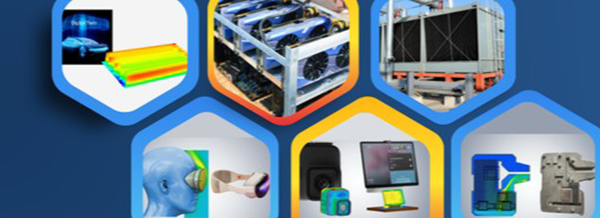

HeatSync
Simulation, Liquid Cooling & Validation for the Next Generation of Electric Vehicles
HeatSync is a specialist thermal engineering partner delivering end-to-end solutions for EV batteries—from concept and simulation to prototyping and test. Its team helps OEMs and Tier 1 suppliers solve core challenges in battery thermal management, safety, and systems integration, providing chip-to-pack expertise for consumer, mobility, and energy-storage applications.
With capabilities spanning high-fidelity modeling, cold-plate and manifold design, thermal test vehicles, and lab validation, HeatSync builds data-driven foundations for predictive thermal controls and BMS logic. Recent program work includes optimizing a 90 kWh EV pack for temperature uniformity and propagation resilience, and a 2025 strategic partnership with M4 Engineering to scale simulation, prototyping, and testing for automotive and ESS customers.
Key Technologies Supporting EV Battery Systems:
Liquid Cooling & Cold-Plate Design
Design and optimization of cold plates, manifolds, and coolant paths sized for fast-charge heat loads and tight ΔT across modules—backed by prototyping and test.
Battery Thermal Modeling & Digital Twins
Cell–module–pack models that predict hotspots, pressure drops, and propagation behavior; model outputs feed BMS set-points and enable predictive thermal control strategies.
Thermal Test Vehicles, Prototyping & Validation
Builds thermal fixtures and executes abuse, environmental, and duty-cycle tests to correlate models and de-risk integration.
System Integration & Controls Support
Bridges mechanical cooling design with controls/BMS requirements so data pipelines, sensors, and algorithms (including AI/ML) can act on reliable thermal signals in real time.
Program Experience: EV & ESS Packs
Applied expertise across EV packs and stationary systems—e.g., optimization of a 90 kWh Li-ion EV battery for performance, safety, and life.
HeatSync delivers advanced simulation, cooling hardware design, validation and partners with customers to develop scalable, cost-effective, and custom-tailored thermal solutions for unique battery architectures—helping EV manufacturers accelerate predictive control and AI-ready battery management while upholding the highest standards of safety and quality.


Miba Battery Systems
Flexible Liquid Cooling & Pack Solutions for the Next Generation of Electric Vehicles
Miba Battery Systems is a trusted supplier of advanced battery packs and thermal components engineered to meet the evolving needs of EV manufacturing. Its innovation-driven portfolio helps OEMs and Tier 1 suppliers solve key challenges in battery thermal management, system integration, and safety—pairing high-efficiency liquid cooling with proven round-cell pack architectures.
With expertise in laser-welded cylindrical-cell modules and the ultra-light FLEXCOOLER® liquid cooling component, Miba delivers lighter, serviceable packs with uniform temperatures for fast charging, durability, and propagation risk reduction—ready to support predictive thermal controls and AI-driven BMS strategies.
Key Technologies Supporting EV Battery Systems:
FLEXCOOLER® Liquid Cooling Component
World’s lightest battery cooler; flexible, cell-conforming channels that improve fast charging, range, and life—no TIMs or adhesives, enabling rework and recycling; validated for shock/vibration and Stop-TP (thermal propagation mitigation).
Laser-Welded Round-Cell Modules
Proprietary high-throughput contacting/welding process for cylindrical cells—first-of-its-kind efficiency to cut resistance, mass, and cost in scalable EV modules and packs.
VOLTMOTION® Custom Mobility Packs
Cell-to-pack designs that integrate FLEXCOOLER® for uniform heat spreading and lower CO₂ and cost versus conventional plate/TIM stacks.
TERRA Off-Highway/Utility Battery
Rugged 650 V / 42.8 kWh system with integrated FLEXCOOLER® for high heat-flux environments—built for tough duty cycles and fast-charge readiness.
Production-Ready Validation & Scale
Thermal performance validation, shock & vibration, and thermal-runaway/Stop-TP testing, supported by Miba’s global manufacturing footprint.
Program Adoption
FLEXCOOLER® selected by a European OEM for a 2026 electric sports car program—evidence of automotive readiness and packaging flexibility.
Miba’s innovations—FLEXCOOLER®, laser-welded round-cell modules, and VOLTMOTION®/TERRA platforms—are shaping the future of EV mobility with lighter packs, tighter thermal control, and integration paths that enable predictive, AI-driven battery management.


Southwest Research Institute
Immersion Cooling, Safety Testing & Predictive Modeling for the Next Generation of Electric Vehicles
Southwest Research Institute is a trusted R&D and test partner helping OEMs and Tier 1 suppliers solve battery thermal management, safety, and systems integration challenges from cell to pack to grid storage. Through its Energy Storage Technology Center®, SwRI performs research and analysis on EV batteries, materials, chemistries, cooling architectures, and control strategies.
With decades of multidisciplinary expertise, SwRI couples abuse and propagation testing with digital twins, CFD/FEA, and controls development—data that feeds predictive thermal control and AI-driven BMS strategies for fast charge, durability, and safety. The Institute’s immersion-cooling programs and novel coolant research further address next-gen heat transfer needs under high heat flux.
Key Technologies Supporting EV Battery Systems:
Immersion Cooling Research & Validation
Dielectric-fluid immersion studies at cell, module, and pack scales to minimize ΔT, increase fast-charge capability, and suppress thermal propagation; includes controlled fluid-flow mitigation during nail-penetration abuse tests.
Battery Abuse & Safety Testing (TR/Propagation)
Cell/module/pack testing and CAE analysis for internal short, thermal runaway, and fire propagation, aligned with automotive and ESS safety methods (e.g., UL 2580, UL 9540A).
Battery Modeling, Digital Twins & Predictive Control
CFD/FEA electro-thermal models predict heat generation, cooling performance, and abuse behavior; outputs inform BMS set-points and enable predictive thermal control and AI/ML strategies for real-time management.
EV Battery Testing Laboratory & Instrumentation
Full-scale EV battery lab capabilities for performance, durability, and thermal management evaluations across chemistries and architectures, from prototype to validation.
Next-Gen Heat Transfer Materials & Coolants
Development and application of innovative e-coolants and immersion fluids to maintain constant temperatures during high C-rate charge/discharge.
SwRI delivers rigorous testing, advanced modeling and partners with customers to design scalable, cost-effective, and tailored thermal solutions for unique battery architectures—helping EV manufacturers accelerate predictive thermal control and AI-driven safety while upholding the highest standards of quality and compliance.


Shell
EV-Plus E-Thermal Fluids for the Next Generation of Electric Vehicles
Shell is a trusted supplier of EV-Plus e-fluids engineered to meet the evolving needs of electric vehicle (EV) manufacturing. Its innovation-driven portfolio helps OEMs and Tier 1 suppliers solve key challenges in battery thermal management, lightweight integration, and safety—centered on dielectric EV-Plus E-Thermal Fluids designed for direct immersion battery cooling, alongside e-transmission fluids and e-greases.
With decades of formulating expertise and high-performance computing used to design and validate next-gen coolants, Shell couples lab science with motorsport development to prove durability under extreme duty cycles—data that informs predictive thermal models and AI-assisted BMS strategies.
Key Technologies Supporting EV Battery Systems:
EV-Plus E-Thermal Fluids (Immersion-Ready)
Electrically non-conductive fluids engineered for direct cell contact to equalize temperatures during fast charge/discharge and reduce propagation risk—ready for immersive cooling architectures.
EV-Plus E-Transmission Fluids
Low-viscosity e-fluids formulated to cut friction and temperature in e-axles, improving drive-unit efficiency and thermal headroom for the pack.
EV-Plus E-Greases
Greases tailored for EV conditions (high speeds, elevated temperatures, electrical effects) to protect bearings and reduce losses in motors and auxiliaries.
Digital Formulation & Validation
Supercomputer-driven simulation and testing to optimize heat transfer and dielectric properties for EV batteries; insights transfer into production fluids and control models.
Shell not only supplies advanced EV-Plus fluids, but also collaborates with customers and technology partners to develop scalable, cost-effective, and custom-tailored cooling solutions for unique battery architectures—helping EV manufacturers accelerate predictive thermal control and AI-driven battery management while upholding the highest standards of safety and quality.


Battery Metals, Inc.
Circular Battery Materials for the Next Generation of Electric Vehicles
Battery Metals, Inc. is a U.S.-based recycler and refiner of end-of-life lithium-ion batteries and OEM scrap, helping OEMs and Tier 1 suppliers close the loop on critical minerals while meeting domestic content and compliance needs. By purchasing consumer, OEM, and EV batteries and returning recovered metals to the supply chain, Battery Metals supports safer battery programs and resilient North American sourcing.
With a North Carolina campus designed for high-throughput shredding and refining, Battery Metals targets efficient, low-emissions recovery—positioning recycled lithium, nickel, cobalt, manganese, copper, and graphite for reuse in new cells, conductors, and thermal hardware. The company is developing R2/RIOS certification and states its output will be IRA-compliant, aligning end-of-life processing with OEM sustainability and regulatory roadmaps.
Key Technologies Supporting EV Battery Systems:
High-Recovery, Non-Thermal Processing
Advanced system designed to eliminate furnace burning, reduce pollution, and recover over 98% of critical minerals—cutting energy use versus traditional pyro routes and returning metals to battery-grade streams.
North Carolina Refining Campus
Shredding and refining capacity planned for 26.5 million lb/year of lithium battery scrap—scalable infrastructure to handle OEM returns, warranty scrap, and end-of-life EV packs.
IRA-Compliant, Domestic Supply
Recovered materials positioned to meet IRA domestic-content expectations, strengthening U.S. battery manufacturing and reducing supply risk.
Battery Scrap Purchasing & Logistics
Direct purchasing of consumer batteries, OEM scrap, and end-of-life EV batteries with developing R2/RIOS program for responsible recycling and traceability.
Direct Recovery & Refining Services
Value-added recovery of metals from waste lithium materials to support cathode manufacturing, conductors, and next-gen heat-transfer components (e.g., copper bus and thermal structures).
Battery Metals’ circular-economy solutions—high-recovery processing, IRA-compliant supply, and responsible end-of-life logistics—help manufacturers improve thermal safety and resilience today while feeding the materials pipeline for tomorrow’s predictive, AI-optimized EV platforms.


Exponent
Battery Safety, Thermal Validation & Predictive Modeling for the Next Generation of Electric Vehicles
Exponent is a trusted scientific and engineering partner delivering battery testing, analysis, and design support across the EV lifecycle. Its multidisciplinary Battery & Energy Storage practice helps OEMs and Tier 1 suppliers solve key challenges in battery thermal management, safety, and systems integration—linking cell chemistry and pack architecture to cooling strategies, propagation mitigation, and compliance.
With decades of failure analysis heritage and custom test capability, Exponent couples abuse/propagation testing, electro-thermal modeling, and fire sciences with data analytics to inform predictive thermal controls and AI-ready BMS strategies. Teams integrate digital twins with lab evidence to de-risk fast charge, improve temperature uniformity, and validate safety concepts at cell, module, pack, and system scales.
Key Technologies Supporting EV Battery Systems:
Battery Failure Analysis & Custom Abuse Testing
Root-cause analysis and tailored test programs (electrical, thermal, mechanical, environmental) to expose vulnerabilities early and guide corrective actions—from nail/crush/overcharge to vibration, humidity, and shock.
Thermal Runaway & Propagation Mitigation
SAE-published guidance and webinar programs on mechanisms, test methods, and pack-level countermeasures; design reviews to limit cell-to-cell propagation and quantify risk.
Electro-Thermal Modeling, Digital Twins & Controls Support
CFD/FEA and fire-dynamics modeling (e.g., FDS/CFAST) tied to test data to size cooling hardware, predict hotspots, and set BMS limits—enabling predictive thermal control and real-time decision support.
Safety, Compliance & Vendor Evaluation
Design/quality assessments, vendor audits, and standards-oriented testing that help teams navigate evolving requirements and accelerate validation.
Fire & Explosion Investigation & Suppression Research
Field investigations and lab studies translating into actionable suppression and containment strategies for lithium-ion incidents.
Exponent delivers rigorous testing and advanced modeling, and partners with customers to develop scalable, cost-effective, and tailored solutions for unique battery architectures—helping EV manufacturers accelerate predictive thermal control and AI-driven safety while upholding the highest standards of quality and compliance.


Gamma Technologies
Model-Based Thermal & Controls Solutions for the Next Generation of Electric Vehicles
Gamma Technologies, creator of GT-SUITE and GT-AutoLion, is a trusted simulation partner for EV development. Its innovation-driven platform helps OEMs and Tier 1 suppliers solve core challenges in battery thermal management, predictive controls, and systems integration—linking electrochemical cell behavior to module/pack cooling, heat-pump loops, and vehicle thermal networks.
With decades of multi-physics leadership, GT delivers physics-based digital twins, ML/optimization, and real-time (MiL/SiL/HiL) execution so teams can design faster-charging, longer-lasting packs; validate thermal-runaway mitigation; and implement AI-ready BMS strategies.
Key Technologies Supporting EV Battery Systems:
GT-SUITE Battery Thermal Management
End-to-end modeling of coolant/refrigerant circuits and under-hood airflow to optimize ΔT, pressure drop, and fast-charge heat rejection—including integrated heat-pump and CO₂ cycles.
GT-AutoLion Electrochemical Modeling
Cell-to-pack electro-thermal models with predictive performance, aging, and safety analysis—foundational for BMS limits and lifetime-aware controls.
GT-AutoLion-3D Cell Simulation
3D distributions of current, temperature, SOC, and aging inside the cell to diagnose non-uniformities that drive hotspots and degradation.
Thermal Runaway & Propagation Analysis (1D–3D)
Multi-physics TR/propagation models to evaluate risks and de-risk designs before hardware.
Real-Time & HiL-Ready Models (GT-SUITE-RT / GT-POWER-xRT)
Reduced-order, fast-running plant models for MiL/SiL/HiL that integrate with popular ECU/controls platforms—enabling predictive thermal control and BMS-in-the-loop development.
Machine-Learning & Optimization Workflows
Built-in ML and design-of-experiments tools to accelerate calibration, anomaly detection, and data-driven thermal/energy management.
Gamma Technologies’ simulation platform—GT-SUITE and GT-AutoLion—is shaping the future of EV mobility with smarter thermal architectures, AI-ready battery management, and faster, lower-risk integration from cell to pack.

